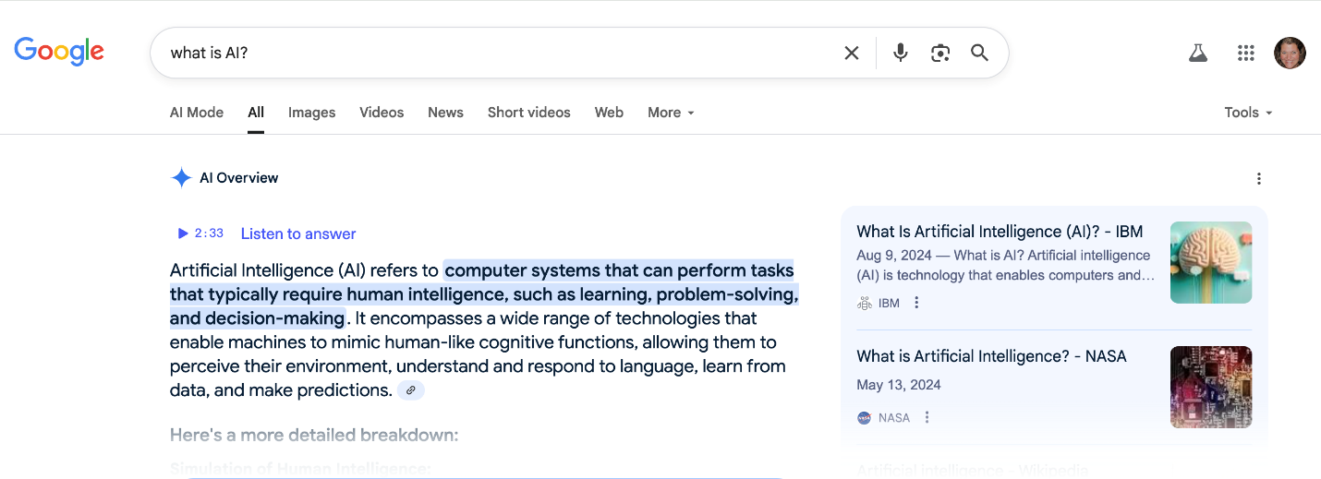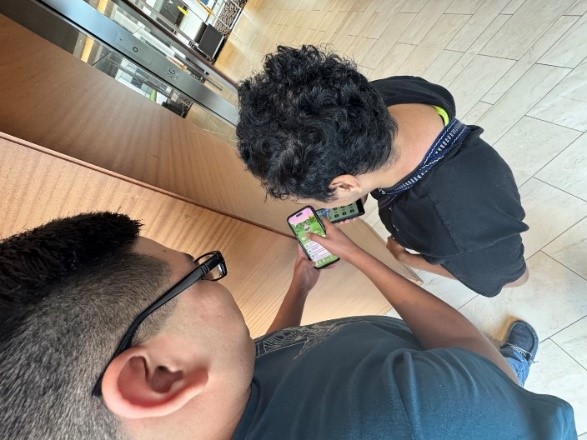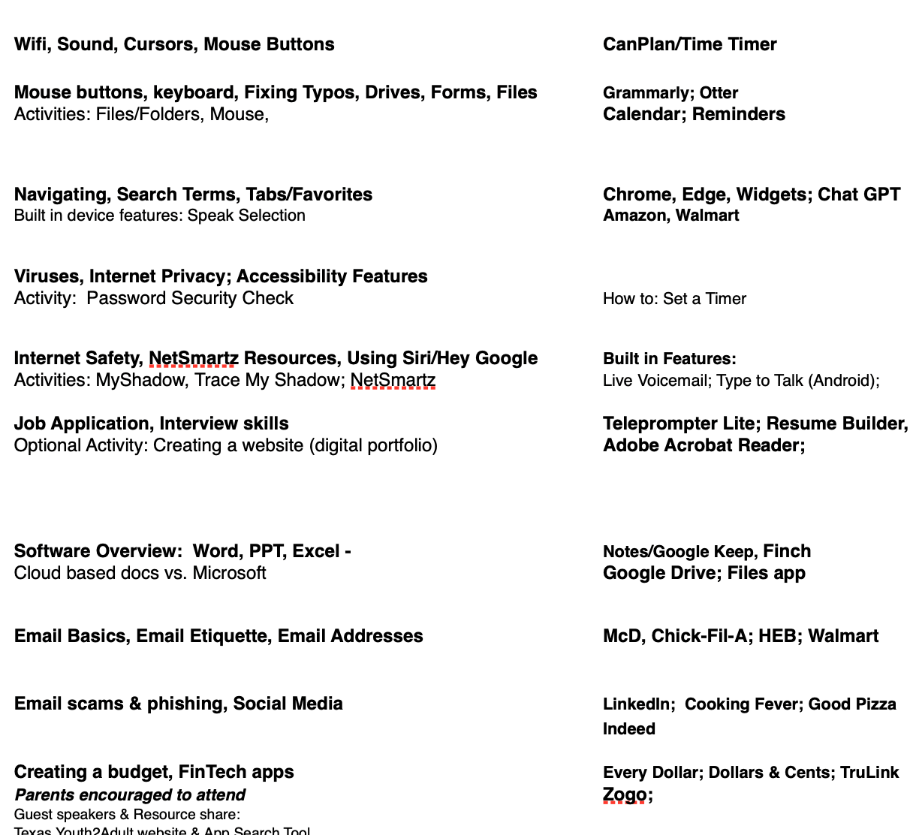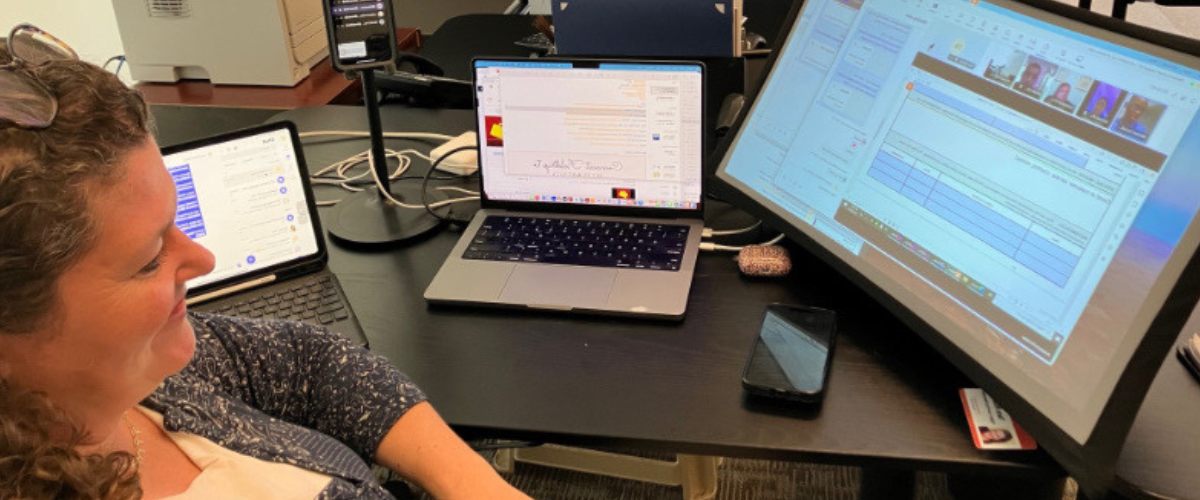Tara Rocha, our BridgingApps Digital Learning Specialist, teaches digital-literacy classes for young adults with IDD. This is Tara’s latest news from the program.
The World of Everyday AI

Lately, our classes have talked quite a bit about AI: voice assistants, search engines, features on our regular apps. If you think about it, AI these days is very much about things we’re already doing. I want students to understand that they’re already using AI, and that it’s a tool that can help them with everyday life, not something to be afraid of because it might “take over.” That’s one of the goals of this class: to help students realize they can use their devices to “bridge the gap” between technology and their everyday lives.

When we talked about ChatGPT, the main focus was on using it for research. Once upon a time within living memory, you’d have to go to a library and use a physical card catalog to look up reference books; then you’d go to the actual bookshelf and pull out those heavy books. And you weren’t allowed to take them home, so you made all your notes on paper, right there in the library. If you were lucky you might have an encyclopedia set at home, but the books were still heavy and cumbersome.
My young adult students have never had to experience that: now we literally have technology at our fingertips, and it’s a lot easier. I haven’t used ChatGPT for research, myself. But it was interesting to demonstrate what it could do—although if you need references to the sources that all that information comes from, Google’s AI Overview system is much better.
![Screenshot of ChatGPT search results for "Tell me about old cars": "Old cars--often called classic, vintage, or antique cars--are vehicles that were made many decades ago and are typically admired today for their design, craftsmanship, and historical value. Here's a quick guide to understanding them: [bullet point in the form of a crossed hammer and wrench]: 1. Antique Cars [bulleted list begins] Made before 1925 (some say 1940, depending on who [sic] you ask); Think Model T Ford, Cadillac Type 30" [end of screenshot]](https://bridgingapps.org/wp-content/uploads/2025/07/Tara-YA-Digital-Literacy-3-1321x634.png)
Speechify: A Game Changer for Learning
One of my student groups has a higher-level understanding of technology, and we’ve had some interesting conversations. I remember when we talked about Speechify, the text-reader app, and how it could be a game changer for disability inclusion. With a disability like dyslexia or ADHD, you can spend a ton of time and effort on a paragraph—and still come out wondering, what did I just read?
Often, being able to listen to something while simultaneously reading it with your eyes helps to focus your thoughts. I know: I have ADHD—actually, my whole family has it. We have a shared account on the premium [paid] version of Speechify, and it’s been worth it to us.
Another interesting Speechify feature is Ask AI, which lets you quiz the app about a document you’ve put in. Everyone loves gamified learning, and this is somewhat like the Kahoot! app, where you can go and ask questions and the app turns them into games.
And the List Goes On…
Another student-favorite app, which gamifies everyday tasks, is called Finch: Self-Care Pet. Users set up to-do lists for their goals and tasks, and the app has this little finch character that grows as things are completed. As the finch gets bigger, users get points that show up as virtual coins; there’s a “shop” where you can use these coins to buy things for the finch. When we talked about Finch in class, one student had a 50-day streak of successfully completing his goals.

A lot of what I’ve mentioned was suggested by the students themselves. I really don’t share many tech recommendations on my own initiative, because it might get someone thinking I’m telling them to buy this or that. One student soaks everything up like a sponge: if you tell him about some gadget, he’s going to go out and get it. I don’t want to encourage impulse spending.
In any case, the focus of this class goes beyond “how-to” skills. Those are just tools toward the larger goal: helping students learn to think for themselves, make their own decisions, and “bridge the gap” between their abilities and success in the larger world.

Special thanks to Comcast NBCUniversal Foundation and NBCUniversal for their generous support and commitment to digital-literacy initiatives.

